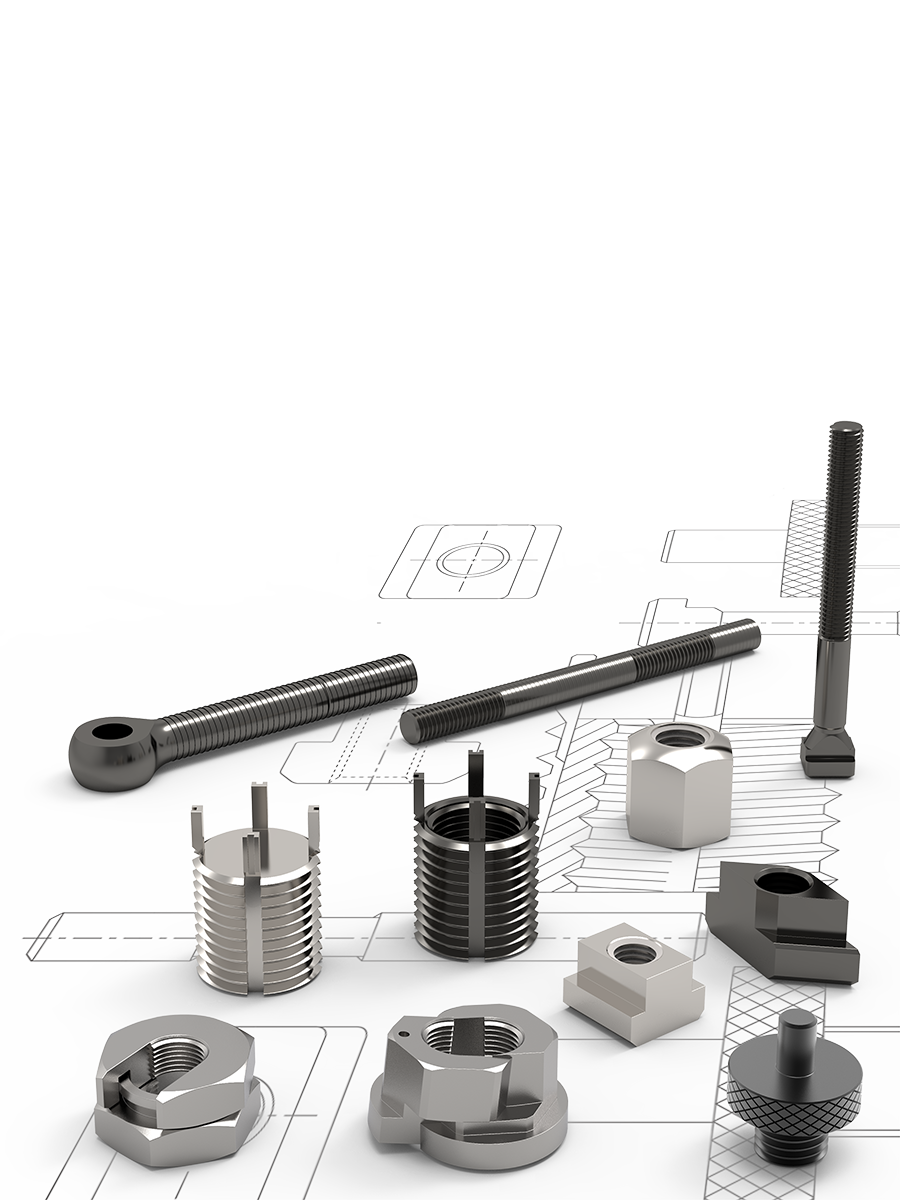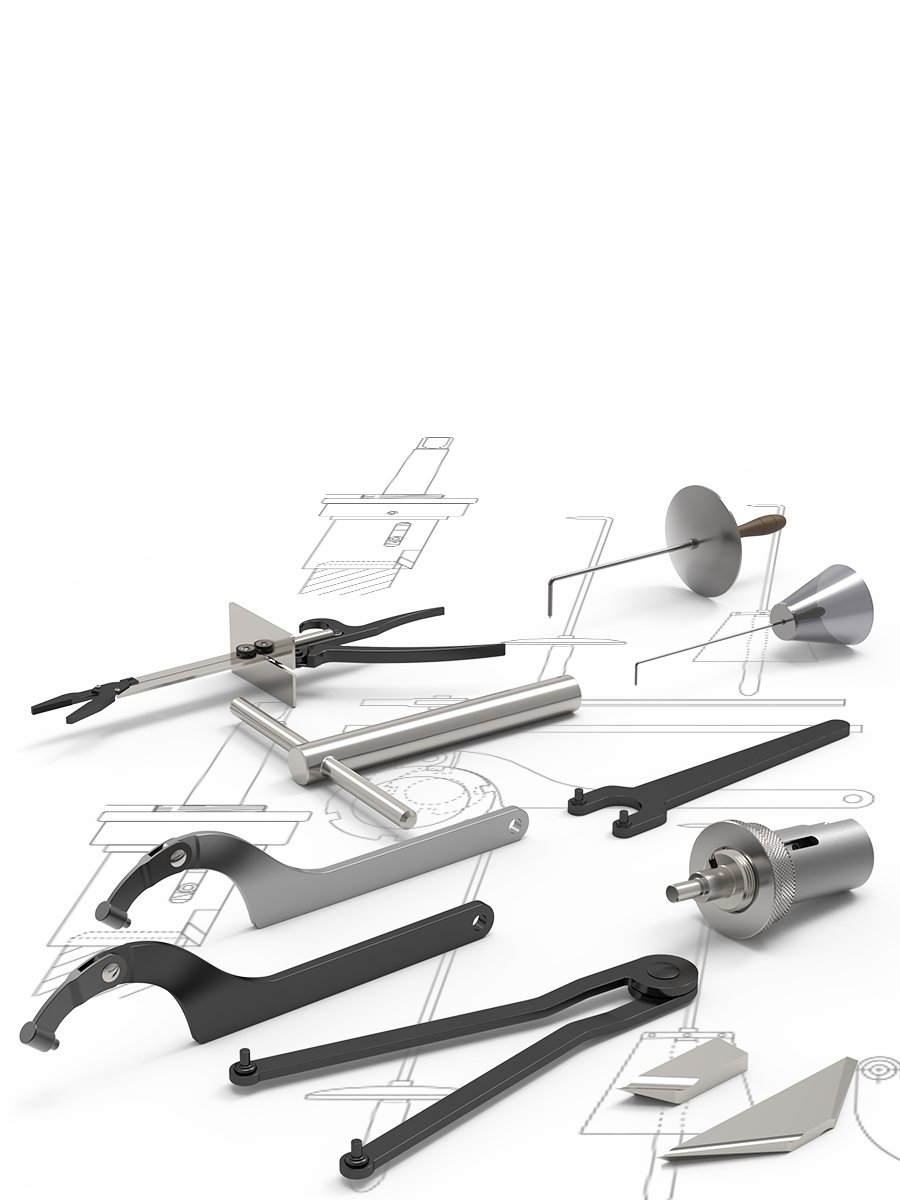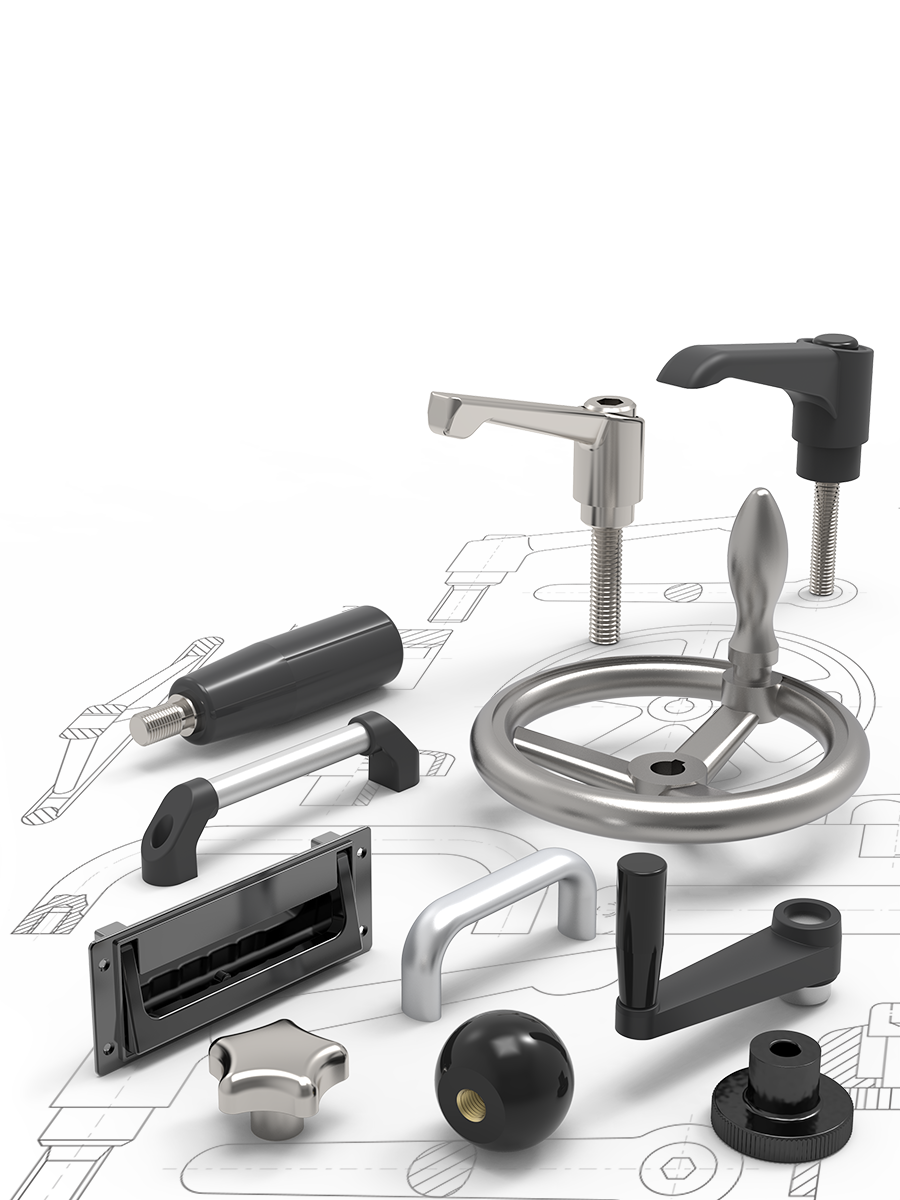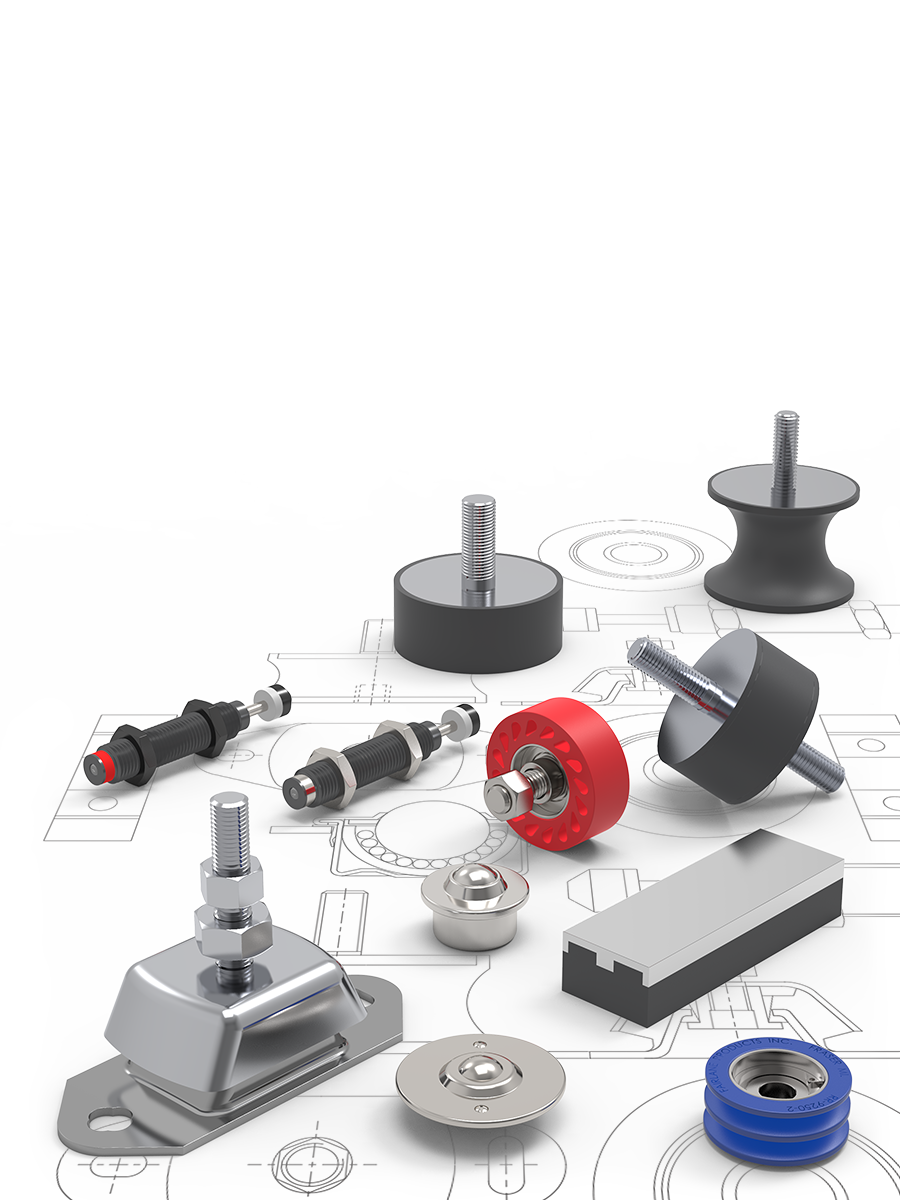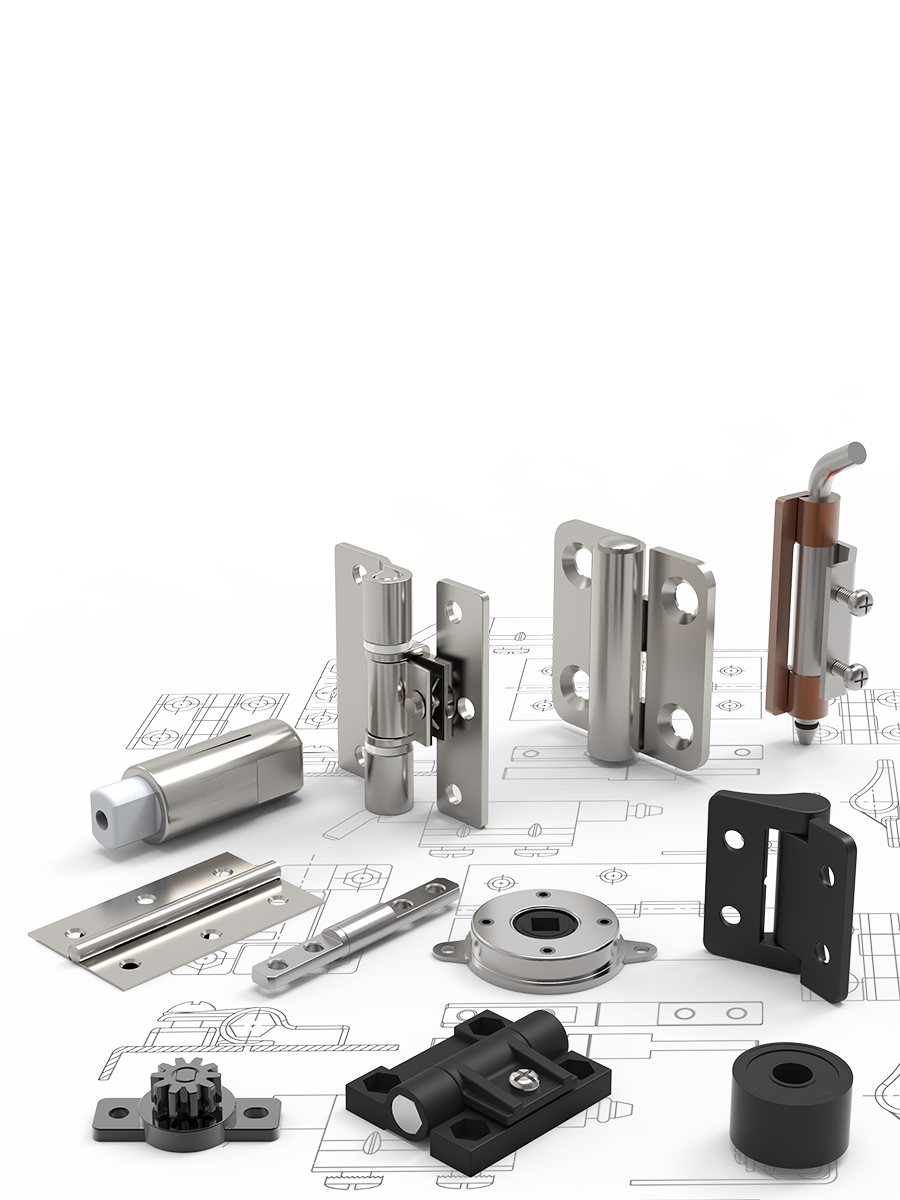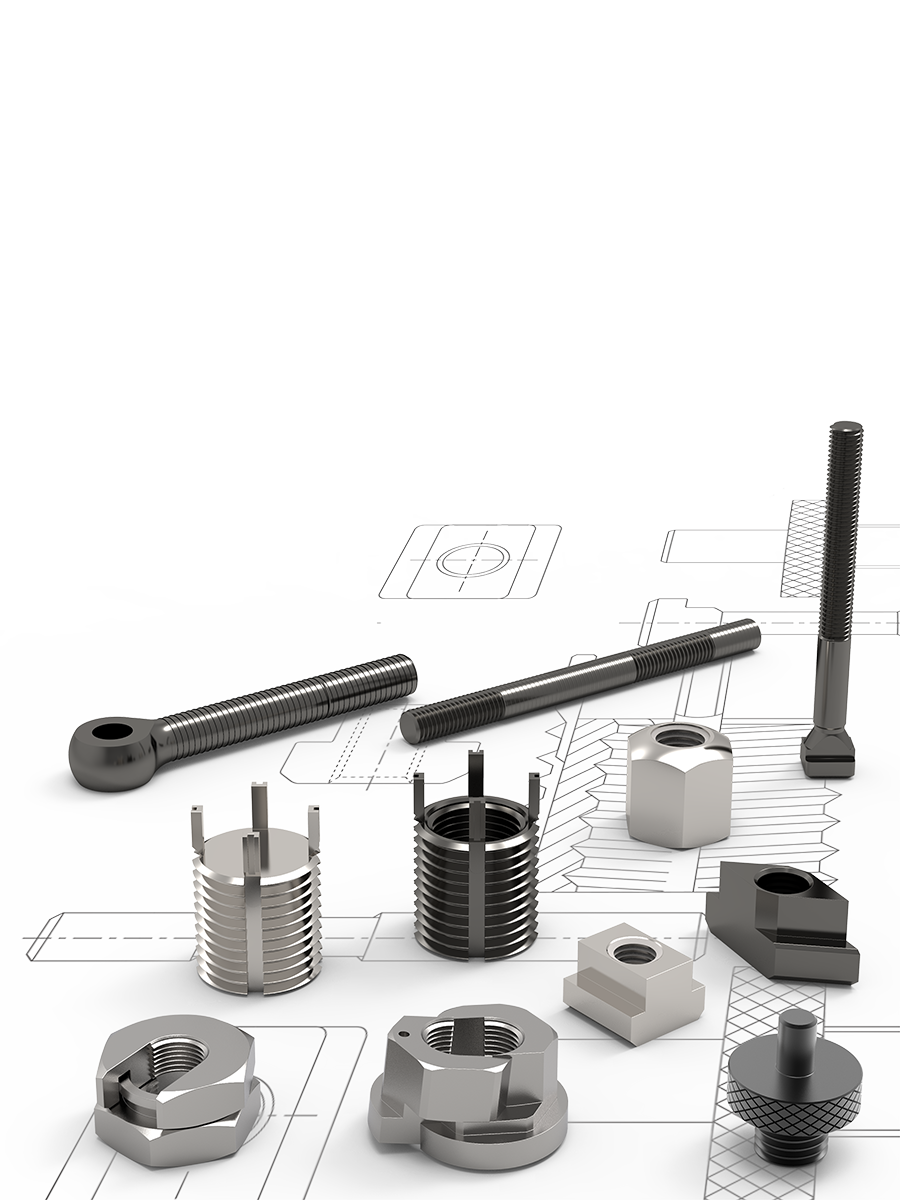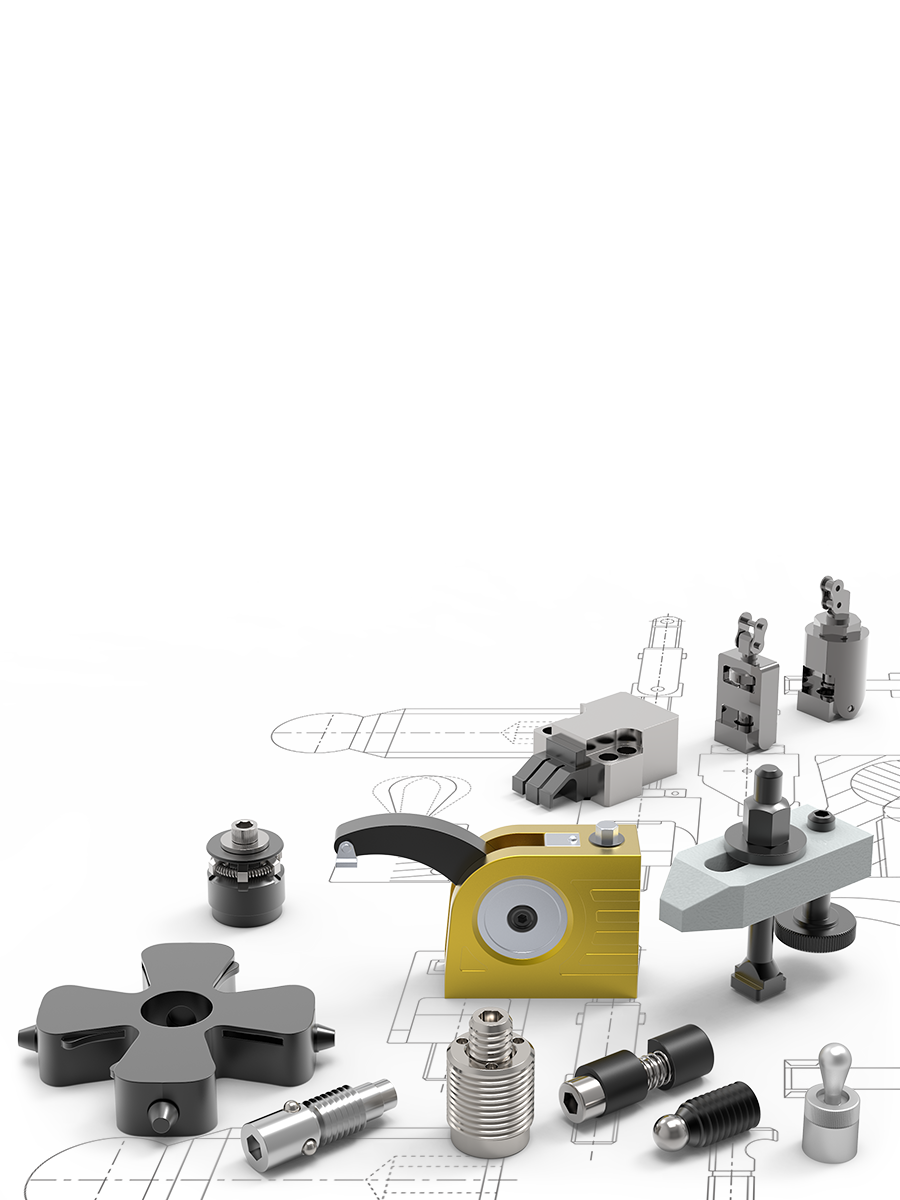Invert-a-Bolts 12080 - 12089
What is...
Invert-A-Bolt™ products are routinely used to implement lean manufacturing initiatives in the work environment. By eliminating dedicated fixturing and the related costs (tool design, manufacture, maintenance & storage) and creating standardized tooling & work practices, it is possible to become significantly more efficient & productive.
Typical usage of an IVB consists of setting up a part in a picture-frame, using the fasteners at the tab locations for hold down, while simultaneously locating at the bushed hole locations in the fixture. The picture frame machining concept is ideal for many parts since hard location against datums is not required.
General Guidance
Introduction
Get rid of clamps and bolts, replace them with Invert-a-bolt (IVB) fasteners. These unique, flush mounted, captive fasteners eliminate obstructions to machining, reduce vibration in your setup and lower cost.
Think of them as a quick change bolt, with the added benefits of never wasting time to grind a bolt to size, nor stop your machine to change clamps. No more warped components due to clamp being over tightened.
IVBs are always in your fixture and are always consistently the same length. Simply screw the larger housing diameter into the fixture plate and bring the inner diameter or stud up into your component's stock material for a superior holding solution.
In high-speed horizontal applications, IVBs are often incorporated for workholding to reduce the risk of tooling clashes. The tiny foot print and "base up" holding power means the IVB presents little risk to high speed spindles.
Great for high speed machining
- Eliminate vibration in the setup. Stable setups enable use of optimal feed-rates for most efficient use of the machine tool.
- Eliminate obstructions to the work environment. Obstructions create hazards which ultimately incur additional and unnecessary costs.
Better than a clamp
- Won't induce warping or other stresses into components.
- Eliminate clamp obstruction.
- Eliminate clamp changes.
- Quick and easy to install and use - clamp and unclamp in seconds.
Better than a bolt
- Tiny footprint of the IVB almost completely eliminates it from the tool path.
- Machine right over the top of an IVB, while continuing to hold securely.
Typical machining sequence
Typical machining sequence for over-the-top tabbing in picture frame machining configuration using IVB fasteners:
- Prep the stock to accept the IVB fasteners and locator pins. Prep for the fasteners consist of drilling a through hole and tapping (or thread-milling) a thread for about 1/2" deep. Prep for the locators would be a drill/ream operation for whatever size locating pin is to be used.
- Load the stock into the fixture. Rough side 1 of the part. No clamps are used. Nothing is in the way of the machining. No clamp changes or avoidance of clamps is required. This looks like a pocketing operation. It's best to leave the excess on the flange top to keep the setup rigid as possible. At the IVB fastener locations, tap the thread about 1/2" deep.
- Flip the part over, locating on the outer "frame" which should be at the height of most of the internal ribs. Shim as required, and rough/finish side 2. Locate as much as possible of the stock material on the base plate. This adds stability to the process versus having it up in the air while machining. Again, no provision for clamps is made. Side 2 is completed including the outside mold line.
- Flip the part over. Finish Side 1 except the tops of the flanges.
- Last operation: thin the tabs to approx. .02"-.03". Part is complete.
- Snap the tabs and perform minimal handwork to top of flange to clean up.

Features
How they work
- Larger outer (housing) diameter screws into the fixture plate, until flush with the surface.
- The smaller (stud) diameter screws in and out of the larger housing diameter.
- When in use, the smaller stud diameter screws into the component material to hold it in place while machining.
- When not in use, the smaller stud diameter can be locked inside the outer diameter, below the fixture surface.
The Invert-a-Bolt solution
- Self contained.
- Easy to install.
- Easy to maintain.
- Low cost.
- Proven track record of use in the Aerospace industry.

Invert-a-Bolt advantages
- Reduce stock size/wastage on every component.
- Reduce number of setups by eliminating clamp changes.
- Reduce fixture size by eliminating clamps.
- Eliminate bridge fixtures.
- Reduce programming headaches.

Installation
IVB fastener is ideal for connecting two materials or objects together, especially when an unobtrusive connection is desired.
Installation requires simple preparation of the "holding" side for the housing thread and the "receiving" side for the stud thread. For relevant dimension values, refer to the individual product pages.
To achieve flush mounting
Installation example base on part no. 12080.W0021
1. Prepare the "holding" side in the following manner:
a. Drill a through hole to diameter d1 (3/4").
b. Counter bore hole d2 (.92/.928" x 0.15"R), to a depth of l1 (1.152").
c. Tap (or thread) m1 (1"-12UNF-2B-LH) to a depth of l2 (.950").
2. Prepare the "receiving" side for the stud threads:
a. Tap drill m2 (27/64") diameter through. Counter sink .60" dia x 45 degrees on receiving side
of component.
b. Tap m3 (½"-13), to a depth of l3 (.45").
Once holding side and receiving side have been prepared, simply screw the IVB fastener into the threaded hole (m1) using the insertion tool. Torque to 35-40 ft. lbs. Place the receiving side tapped hole (m3) directly above the IVB fastener. Reach through the (m3) hole with your hex head wrench until contacting the hex head broach in the IVB stud. Start turning counter-clockwise, lifting your hex head wrench at the same time. The stud will proceed into the (m3) tapped hole. Tighten until the stud is fully engaged (approx. .40 inches in the receiving side) at 35 ft. lbs. Use a feeler gauge to ensure the receiving side material is pulled down properly.

Maintenance
Periodically remove the IVB for cleaning. The fastener can be disassembled by removing the cover in the base of the IVB, which then can be blown out to clean out accumulated metal chips and debris. For faster cleaning, simply hose water through the top of the fastener, allowing the debris to pass through the slots in the base of the product. Inspect for worn parts and purchase spares as required.
Applications

Hex key

Locating receiver

Locating post

Begin with a baseplate, the proper number of IVB Smart Locators and IVB Receivers.

Install IVB Smart Locators into the baseplate using a hex wrench.

Load vise over the IVB Smart Locators and onto the baseplate.

Install IVB Receiver Locators.
- High speed machining.
- Modular tooling.
- Assembly jigs.
- Dedicated fixturing.
Email Newsletter
Be the first to receive the latest news and exclusive offers via our newsletter.
Alexia House, Glenmore Business Park
PO19 7BJ Chichester
United Kingdom
0333 207 4497
sales@wixroyd.com
Route via Google Maps
Company registration no: 00496138
Company VAT number GB 408154022


















